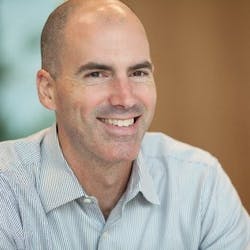Dycom’s incoming CEO says it expects BEAD revenues to ramp in 2026
Dycom, being one of the largest construction companies focused on the telecommunications industry, remains bullish on the revenue prospects that the Broadband Equity, Access, and Deployment (BEAD) funding program could bring as communities build new networks over the next few years.
One of the key indicators of what will come with BEAD has been seen in Louisiana, which was granted over $1.3 billion from the U.S. government-run program. Lousiana will call for the BEAD-supported program to be designated as GUMBO 2.0. A large portion of the awards are for fiber-based proposals.
Last week, the state revealed that AT&T, Brightspeed, Charter, Comcast, and Cox were awarded funding. However, the providers set to receive the most significant awards are local and regional providers, including the Louisiana Local Fiber Consortium, Conexon Connect, and Nextlink.
Speaking to investors during its fiscal 2025 third-quarter earnings call, incoming CEO Daniel Peyovich said that the company sees opportunities coming later next year and into 2026.
“The last quarter we talked about was in the second half, the third quarter of 2025; we still believe that we can see revenue in that time frame,” he said. “We're just talking about probably the significant ramp in 2026.”
He added that Louisana’s focus on fiber is encouraging. “Everybody saw that Louisiana make some announcements. I'm certainly excited to see that 95% of that was fiber. We'll see how it all plays out, but it's a good start. And collectively, with the amounts that would be contributed from the subgrantees, that's over $1 billion in fiber construction for Louisiana.”
FTTH opportunities
While BEAD is undoubtedly a key focus for Dycom and other network builders, the company is just as keen on how major carriers ramp up their fiber broadband plans.
Peyovich noted that its largest customers—AT&T and Verizon—are ramping up their FTTH plans.
Verizon indicated that it will extend its fiber footprint even further after it completes its acquisition of Frontier. Verizon is on track to reach about 500,000 premises with fiber by 2024, while Frontier has set a goal of reaching 10 million locations by the end of 2026. Also, in 2025, Verizon is targeting an expansion of our Fios build to 650,000 premises.
After the Frontier deal closed, Verizon indicated during its third-quarter earnings call that it could increase its fiber passings by acquiring 1 million plus premises per year.
“As everybody noted this quarter, Verizon and Frontier approved the transaction by the shareholders,” Peyovich said. “They've talked about adding an incremental 7 million to 12 million passings from what we saw before. So, before the third quarter, there are already over 9 million passings added incrementally this year, another 7 million to 12 million.”
Likewise, AT&T is continuing its fiber growth path, adding 226,000 AT&T Fiber customers in the quarter. AT&T will likely reveal additional plans to expand its fiber base further during its Analyst and Investor Day event next month.
“So, significant opportunities are still there,” Peyovich said. “We're very excited about the opportunity to continue to fiber-the-home passing, and it's just great to see our customers continue to add CapEx and increase some of these homes passed.”
Provider builds rise up
As Dycom’s key customers ramped up builds during the quarter, the company reported that contract revenues were $1.27 billion, up 12% compared to the third quarter of 2024. The company’s organic revenue increased 7.6% after excluding revenue from acquired businesses each period, storm work for the current quarter and revenue from a change order and project closeout in the prior year quarter.
The company's top five customers combined produced 55.7% of revenue and grew organically 16.7%. AT&T remained Dycom’s largest customer, with $265.6 million or 20.9% of revenue, and grew organically 58.4%. Lumen was its second largest customer, with $146.4 million or 11.5% of revenue.
Its third largest customer was $104.9 million, or 8.2% of revenue, and grew 50.2% organically. Comcast was at $102.7 million, or 8.1% of revenue. Finally, Brightspeed was its fifth most significant customer, at $88.6 million, or 7% of income, and grew 43.3% organically.
However, Dycom noted that other customers decreased slightly on an organic basis.
Dycom’s backlog at the end of the third quarter was $7.9 billion versus $6.8 billion in July 2024, up $1 billion. Of this backlog, approximately $4.467 billion is expected to be completed in the next 12 months.
Drew DeFerrari, Dycom's SVP and CFO, said the company has forecasted more growth in the upcoming quarter. “As we look ahead to the fourth quarter, we expect total contract revenues to increase mid-to-high single digits as a percentage of contract revenues compared to $952.5 million in Q4 '24,” he said. “Included in the expectation for Q4 '25 is approximately $35 million of revenues from acquired businesses not owned for the entirety of the current and prior year quarters.”
Here’s Lightwave+BTR’s third-quarter broadband earnings coverage
For related articles, visit the Business Topic Center.
For more information on high-speed transmission systems and suppliers, visit the Lightwave Buyer’s Guide.
To stay abreast of fiber network deployments, subscribe to Lightwave’s Service Providers and Datacom/Data Center newsletters.
About the Author
Sean Buckley
Sean is responsible for establishing and executing the editorial strategy of Lightwave across its website, email newsletters, events, and other information products.


